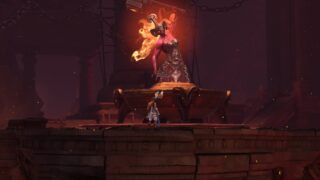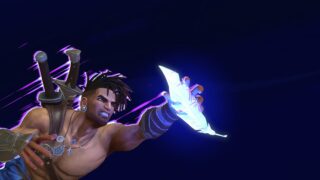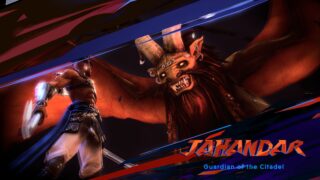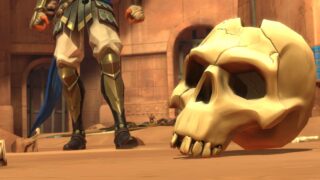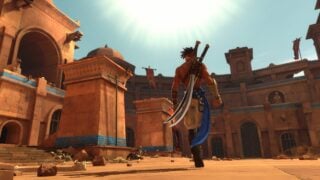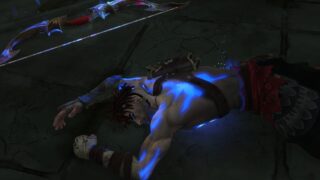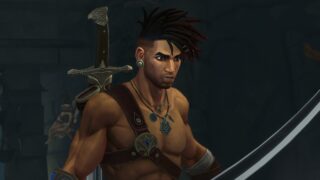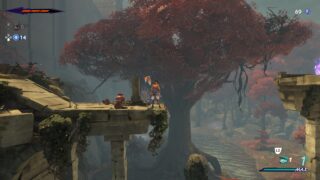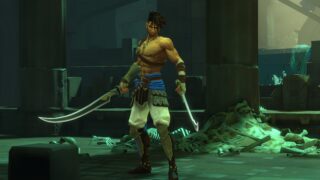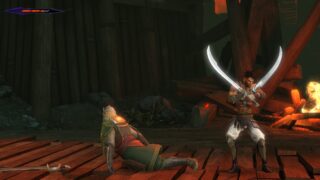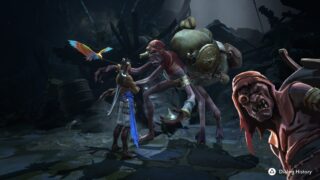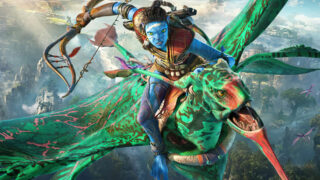Prince of Persia: The Lost Crown is 2024’s first hidden treasure
Ubisoft Montpellier delivers the reboot the franchise desperately needed
- Game director
- Mounir Radi
- Key Credits
- Abdelhak Elguess (Senior producer), Jean-Christophe Alessandri (Senior art director)

What was once a stalwart of Ubisoft’s release schedule, spawning well-loved games like The Sands of Time, Warrior Within, and The Two Thrones, Prince of Persia’s fortunes declined almost in parallel with the meteoric rise of Ubisoft’s biggest franchise, Assassin’s Creed.
The series’ influence on Assassin’s Creed is unmistakable, but from a Ubisoft perspective, the success of its biggest franchise has made Prince of Persia somewhat irrelevant. It doesn’t help that the currently in-development remake of The Sands of Time has seemingly faced such difficult production.
Enter Prince of Persia: The Lost Crown, a side-scrolling Metroidvania entry in the PoP series developed by Ubisoft Montpellier, the team behind the Rayman series, including the seminal Rayman Legends.
Buy Prince of Persia
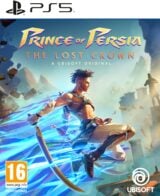
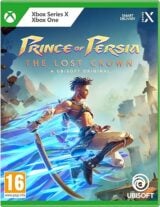
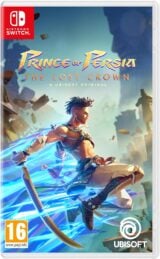
That Rayman influence is keenly felt in The Lost Crown, as while, unlike Ubisoft Montpellier’s original hero, your main character has limbs connecting his appendages to his body, the fast-flowing movement, exciting platforming, and excellent level design is all present and correct.
The Lost Crown is a Metroidvania. You explore a large world full of blocked paths, which will later become accessible thanks to powers you’ll receive later on your travels. This is well-worn video game territory, and in recent years, there has been a slew of high-quality entrees in the genre. Games like Dead Cells (which was so faithful it later received official Castlevania content) and the excellent Metroid Dread lead the pack for recent Metroidvania games, but we’re happy to say that The Lost Crown isn’t all that far behind.
In one crucial way, it actually surpasses those titles, and it’s by fixing one of the biggest annoyances of the genre and putting guide writers out of work all at once. As mentioned, the game is full of hidden paths that are only unlockable with powers found later in the game.
Suppose you run into these problems before you have the power you need. In that case, the game will let you take a screenshot of the area and place it on your map, meaning that later, when you start unlocking powers, you can check if it’s the correct mechanic you need to solve a puzzle without having to haul yourself back to that first area.
Nothing has made us more motivated to actually go back and collect everything in a game in quite some time. It’s innovative, simple, and completely alleviates the possibility of returning to an area only to realize you have the wrong power, which is crucial on a map this big.

Speaking of the map, the world of The Lost Crown is sprawling and hugely varied. Just as we thought we were getting to the point when we’d wrap around to the start of the game again to finish off the loose threads, a new huge chunk of the map opened up, sending us down a path for an entirely new power. This ties in with our previous point about the screenshot ability, as without it, the scale of The Lost Crown would feel somewhat overwhelming to backtrack through.
Combat is largely hacking and slashing with a generous parry, and some ranged weapons. This is the weakest element of The Lost Crown, as although plenty of options are offered, enemies never feel particularly satisfying to defeat, and boss fights are often inconsistent.
None of the small enemies you battle in the majority of the game pose anything like the threat of the bosses, so we often felt unprepared or rusty when it came to battling enemies with screen-filling health bars, in contrast to the small enemies that can very easily be dispatched.
“Without its ability to pin screenshots to the map, the scale of The Lost Crown would feel somewhat overwhelming to backtrack through.”
Visually, this isn’t the most striking game, but the character designs are strong, and the environments you travel through are varied. Crucially, the game has a very clear visual language, which means you’re very unlikely to be searching for hours for one tiny crack in the wall, which will lead you to your next objective. It’s a simple-looking game, but that’s all it needs to be.
It runs incredibly well on PlayStation 5, which is ideal for the tricky platforming that can sometimes include split-second decisions. For this reason, we’d have loved to see the parry system be slightly more refined and rewarding; the game certainly has the technical performance to support it.
The Lost Crown feels destined to become the cult classic that people implore you to play before finalizing your Game of the Year lists for 2024. The platforming is truly excellent, and a well-earned flex from the team behind the wonderful Rayman Legends.

Buy Prince of Persia



The puzzles that populate the massive world are engaging and clever without being controller-destroyingly annoying, and the whole game keeps up an excellent pace during its 15 to 20 hours.
Of course, that playtime can be lengthened by the real star of Prince of Persia: The Lost Crown, the incredible map. From now on, if a Metroidvania game doesn’t have the ability to pin images of an area to a map, it’s going to feel like it’s missing something huge. That’s the sign of a truly great game, when you can refine something so fundamental to a genre that other games simply have to copy it.
Prince of Persia was long in need of a resurrection, and in The Lost Crown, it's found it. Excellent platforming, clever puzzles and a huge map make one of the best Metroidvania games in years, and kicks off 2024 in style.
- Excellent platforming
- Smart puzzles that rarely frustrate
- Large, sprawling world
- Pinning screenshots to the map is true genre advancement
- Combat is somewhat clumsy
- Narrative doesn't live long in the memory





